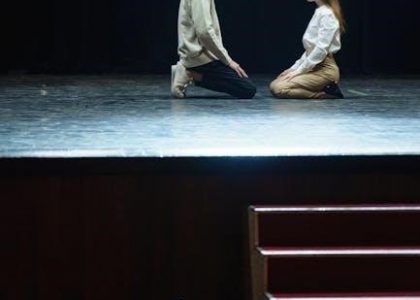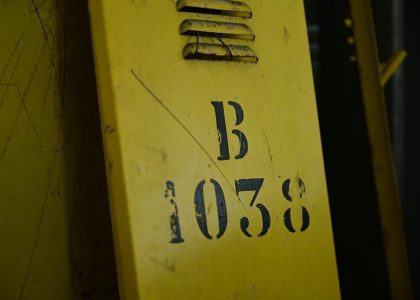The 3rd Degree Masonic Ritual, or Master Mason Degree, is Freemasonry’s highest level, emphasizing moral values, brotherhood, and spiritual growth through symbolic ceremonies and teachings.
Overview of Freemasonry and Its Degrees
Freemasonry is a fraternal organization with a structured system of degrees, each representing a progressive journey of moral, ethical, and spiritual development. The three main degrees—Entered Apprentice, Fellow Craft, and Master Mason—introduce members to foundational principles, symbols, and teachings. These degrees are designed to cultivate wisdom, fellowship, and service, guiding members toward self-improvement and societal contribution. The 3rd Degree, or Master Mason, is the highest, emphasizing mastery of Masonic principles and the commitment to serve humanity.
Significance of the 3rd Degree in Freemasonry
The 3rd Degree, or Master Mason Degree, holds profound significance as the culmination of a Mason’s journey, symbolizing spiritual resurrection and eternal life. It emphasizes moral integrity, justice, and service to humanity. This degree represents the pinnacle of Masonic teachings, where members are reminded of their duty to uphold ethical principles and contribute to societal well-being. The ritual’s themes of death, resurrection, and immortality underscore personal transformation and the pursuit of wisdom. Achieving this degree marks a Mason’s commitment to lifelong moral growth and service, embodying the fraternity’s highest ideals.
Historical Background of the 3rd Degree Ritual
The 3rd Degree Masonic Ritual traces its origins to medieval stonemasonry traditions, evolving over centuries and formalized in the 18th century in England, shaping modern Freemasonry.
Origins and Evolution of the Master Mason Degree
The Master Mason Degree, or 3rd Degree, originated in medieval Europe, emerging from stonemason guilds. Initially, it focused on practical skills but later incorporated moral and spiritual teachings. Over centuries, the ritual evolved, influenced by Enlightenment ideals and speculative Freemasonry. By the 18th century, it was formalized in England, integrating allegorical stories and symbolic elements. This evolution reflected broader societal changes, transforming the degree into a profound initiation emphasizing personal growth and ethical living.
Key Figures and Influences in Its Development
Prominent figures like William Preston and Albert Mackey significantly influenced the development of the Master Mason Degree. Their contributions shaped the ritual’s structure and symbolism, blending historical and philosophical elements. The degree was also impacted by Enlightenment thinkers, who emphasized reason and moral improvement. Additionally, 18th-century Masonic revivalists played a crucial role in formalizing the ceremony, integrating allegorical narratives and spiritual themes. These influences have enduringly shaped the 3rd Degree, making it a cornerstone of Freemasonry.

Structure of the 3rd Degree Masonic Ritual
The 3rd Degree Masonic Ritual is divided into three parts, featuring symbolic dramas, moral lessons, and tests of courage, strength, and knowledge, culminating in the raising ceremony.
Preparation and Requirements for Candidates
Candidates for the 3rd Degree must demonstrate a deep understanding of Masonic principles and symbolism. They are required to pass tests of knowledge, strength, and courage, showcasing their commitment to the craft. The ritual includes a morality play, where the candidate actively participates, reinforcing ethical lessons. Proper preparation involves memorizing key rituals and grasping the symbolic meaning behind them. Candidates must also exhibit moral integrity and a willingness to embrace the responsibilities of a Master Mason, culminating in the symbolic raising ceremony.
Key Elements of the Ritual: Tests and Symbolism
The 3rd Degree Ritual includes three tests: knowledge, strength, and courage. These trials symbolize a Mason’s journey through life’s challenges. Symbolism plays a central role, with elements like the Great Lights and the Lodge Room representing moral and spiritual truths. The candidate’s blindfolded walk across a bridge signifies trust and faith, while the raising ceremony embodies resurrection and eternal life. These elements collectively underscore the ritual’s profound moral and philosophical teachings, guiding the initiate toward enlightenment and service.
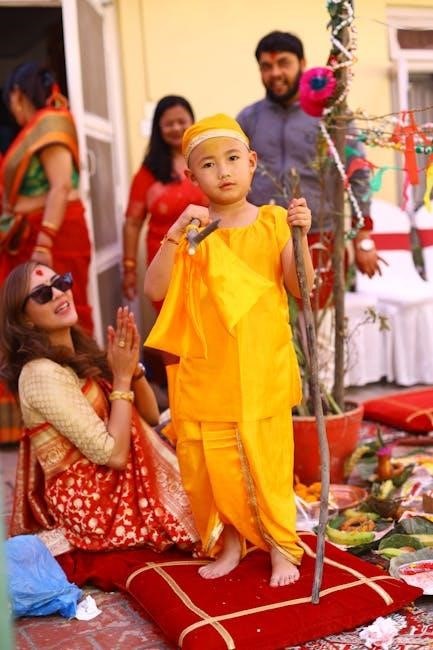
Symbols and Their Meanings in the 3rd Degree
Central symbols include the Great Lights, Square, Compasses, and the Lodge Room, each representing moral truths, divine wisdom, and the pursuit of spiritual enlightenment and brotherhood.
The Great Lights: Volume of Sacred Law, Square, and Compasses
The Great Lights are central symbols in the 3rd Degree ritual, representing divine truth and moral guidance. The Volume of Sacred Law embodies spiritual wisdom, while the Square symbolizes morality and fairness. The Compasses signify self-control and boundaries, guiding Masons to balance personal desires with ethical responsibilities. Together, these symbols illuminate the path of enlightenment, teaching the importance of living justly and harmoniously. They are constant reminders of Freemasonry’s core values, inspiring Master Masons to uphold truth and virtue in all aspects of life.
The Lodge Room as a Symbolic Temple
The Lodge Room serves as a symbolic temple, representing a sacred space for moral and spiritual growth. Its arrangement, with the altar at the center, symbolizes the order of the universe. The Worshipful Master, Senior Warden, and Junior Warden positions embody the sun, moon, and stars, teaching harmony and balance; This sacred space reflects the journey of the candidate, guiding them toward enlightenment and self-discovery. The Lodge Room’s symbolism reinforces Freemasonry’s principles, creating an environment for introspection and unity among its members.
Moral and Ethical Principles Taught in the Ritual
The 3rd Degree emphasizes integrity, justice, and service, teaching Masons to uphold moral standards, act with compassion, and promote brotherhood and equality among all humanity.
Morality: The Core of Masonic Values
Morality stands as the cornerstone of Masonic teachings, emphasizing honesty, integrity, and righteousness. The 3rd Degree ritual underscores the importance of adhering to a strict moral code, guiding Masons to lead virtuous lives, free from vice. Central to this is the principle of ethical conduct, where Masons are exhorted to uphold truth, justice, and compassion in all interactions. This moral framework is not merely theoretical but is integrated into practical aspects of life, ensuring Masons contribute positively to society through their actions and character.
Brotherhood and Equality Among Members
Brotherhood and equality are central tenets of Freemasonry, emphasized in the 3rd Degree ritual. Masons are united by shared values, transcending race, religion, and social status. The lodge serves as a sanctuary of equality, where members embrace fraternity and mutual respect. This principle fosters a sense of belonging and solidarity, encouraging Masons to support one another in personal and communal endeavors. By upholding equality, Freemasonry promotes harmony and unity, reflecting its commitment to a universal brotherhood dedicated to the greater good of humanity.

Ceremonies and Initiation Process
The 3rd Degree initiation involves symbolic ceremonies, including tests of knowledge, strength, and courage, culminating in the raising ceremony, which symbolizes rebirth and resurrection.
The Raising Ceremony: Symbolism and Significance
The Raising Ceremony is a pivotal moment in the 3rd Degree Ritual, symbolizing rebirth and resurrection. It represents the initiate’s spiritual awakening and triumph over adversity. The candidate, blindfolded and kneeling, is raised by two Master Masons, signifying their emergence from darkness to light. This act embodies the journey from ignorance to enlightenment, reflecting Freemasonry’s core teachings of moral integrity and immortality. The ceremony underscores the fraternity’s belief in personal transformation and eternal life, leaving a profound impact on the initiate.
Initiation Tests: Knowledge, Strength, and Courage
The 3rd Degree Ritual includes three initiation tests: knowledge, strength, and courage. Candidates must demonstrate mastery of Masonic principles and symbolism, showcasing their understanding through precise answers. Strength is tested through physical challenges, while courage is proven by overcoming symbolic obstacles, such as a blindfolded walk. These trials ensure readiness for the Master Mason Degree, symbolizing the initiate’s commitment to moral growth, resilience, and steadfastness in the face of adversity, aligning with Freemasonry’s values of personal development and brotherly support;

Psychological Impact on the Initiate
The 3rd Degree Ritual profoundly impacts the initiate, fostering transformation through symbolic experiences, moral reflection, and spiritual enlightenment, deepening their commitment to Freemasonry’s values and purpose.
Transformation Through Ritual Experience
The 3rd Degree Masonic Ritual induces profound transformation in initiates through its symbolic and allegorical framework. The experience, often described as a spiritual rebirth, challenges individuals to confront mortality, resilience, and ethical living. By navigating the ritual’s trials, participants develop a deeper understanding of Masonic principles, fostering personal growth and a renewed commitment to service and moral integrity. This transformative journey is central to the Master Mason’s development, embedding lifelong lessons of courage, wisdom, and brotherhood.
Personal Growth and Spiritual Enlightenment
The 3rd Degree Masonic Ritual fosters profound personal growth and spiritual enlightenment by immersing candidates in symbolic experiences that mirror life’s challenges. The ritual’s emphasis on moral lessons and self-reflection encourages introspection, helping individuals align their actions with higher ideals. Through allegorical teachings, participants gain insights into their purpose and duty, inspiring a deeper commitment to ethical living and spiritual development. This transformative experience cultivates inner strength, wisdom, and a sense of responsibility, guiding Master Masons toward a life of meaningful service and moral integrity.
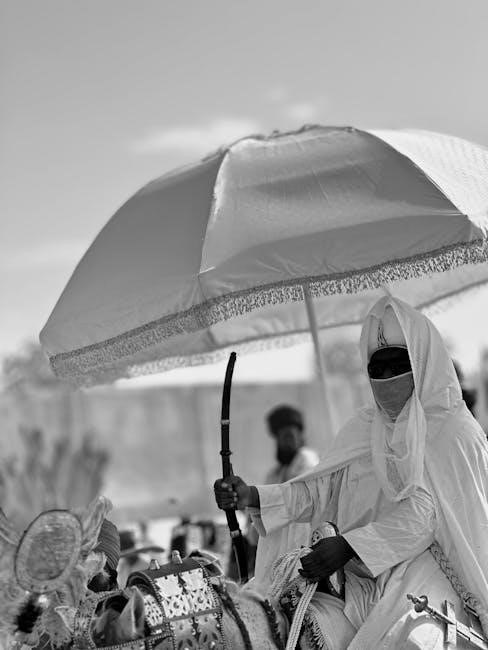
Community Involvement and Responsibilities
Master Masons are expected to engage in community service, support charitable causes, and uphold moral integrity, fostering a positive impact in society.
Post-Ritual Expectations and Community Service
Following the 3rd Degree ritual, Master Masons are expected to actively engage in community service, supporting charitable causes and upholding moral integrity. They are encouraged to contribute to societal well-being through volunteering and philanthropy. Masons are also tasked with mentoring less experienced brethren, fostering a culture of knowledge-sharing and brotherhood. The fraternity emphasizes ethical conduct, urging members to act with honesty and compassion in all aspects of life. By fulfilling these responsibilities, Master Masons embody the principles of Freemasonry and work toward the betterment of humanity.
Leadership Roles and Networking Opportunities
Attaining the 3rd Degree opens doors to leadership roles within the lodge, enabling Master Masons to guide and inspire brethren. Members gain opportunities to develop organizational and communication skills by serving as lodge officers; Additionally, the global network of Freemasonry fosters professional and social connections, allowing Master Masons to collaborate and share ideas. These interactions strengthen unity and promote shared goals, enhancing both personal and Masonic growth. Leadership and networking are integral to advancing the fraternity’s mission and individual development.
Comparison with Other Masonic Degrees
The 3rd Degree is the culmination of Masonic education, differing from the 1st and 2nd Degrees in its focus on advanced symbolism, moral lessons, and fraternal obligations.
Differences from the 1st and 2nd Degrees
The 3rd Degree differs significantly from the 1st and 2nd Degrees in its depth and complexity. While the 1st Degree introduces basic Masonic principles and symbolism, the 2nd Degree expands on moral lessons and philosophical teachings. In contrast, the 3rd Degree focuses on mastery of the craft, emphasizing advanced symbolism, ethical responsibilities, and spiritual growth. It culminates in the raising ceremony, symbolizing rebirth and immortality, and is the final step in a candidate’s formal Masonic education, marking their full integration into the fraternity.
Advanced Symbolism and Allegories
The 3rd Degree delves into profound symbolism and allegories, enriching the candidate’s understanding of Masonic philosophy. Central symbols include the Great Lights and the Lodge Room, representing divine guidance and a sacred space for moral instruction. Allegorical narratives explore themes of resurrection and eternal life, emphasizing the pursuit of virtue and wisdom. These elements collectively deepen the initiate’s spiritual and ethical awareness, distinguishing the 3rd Degree as a pinnacle of Masonic enlightenment and personal transformation.

Practical Steps for Aspiring Master Masons
Aspiring Master Masons should thoroughly study Masonic rituals, attend educational meetings, and engage in lodge activities to prepare for the 3rd Degree examination and beyond.
Preparing for the 3rd Degree Examination
Preparing for the 3rd Degree examination requires a deep understanding of Masonic rituals, symbols, and principles. Candidates should thoroughly study the ritual text, focusing on key themes like morality, brotherhood, and spiritual growth. Regular attendance at lodge meetings and participation in educational programs can enhance comprehension. Memorization of specific passages and symbols is essential, as is reflecting on their meanings to ensure a genuine grasp of the teachings. Practice with experienced mentors and fellow Masons can also aid in mastering the ritualistic elements and ensuring readiness for the examination.
Continuous Learning and Masonic Education
Continuous learning is vital for Masonic growth, even after achieving the 3rd Degree. Masons are encouraged to engage in ongoing education through lodge discussions, workshops, and literature. Studying Masonic history, symbolism, and philosophy deepens understanding of the craft. Active participation in lodge activities and mentoring newer members fosters a culture of knowledge sharing. Embracing lifelong learning ensures that Masons remain committed to personal development and the principles of Freemasonry, enriching both their individual journeys and the fraternity as a whole.
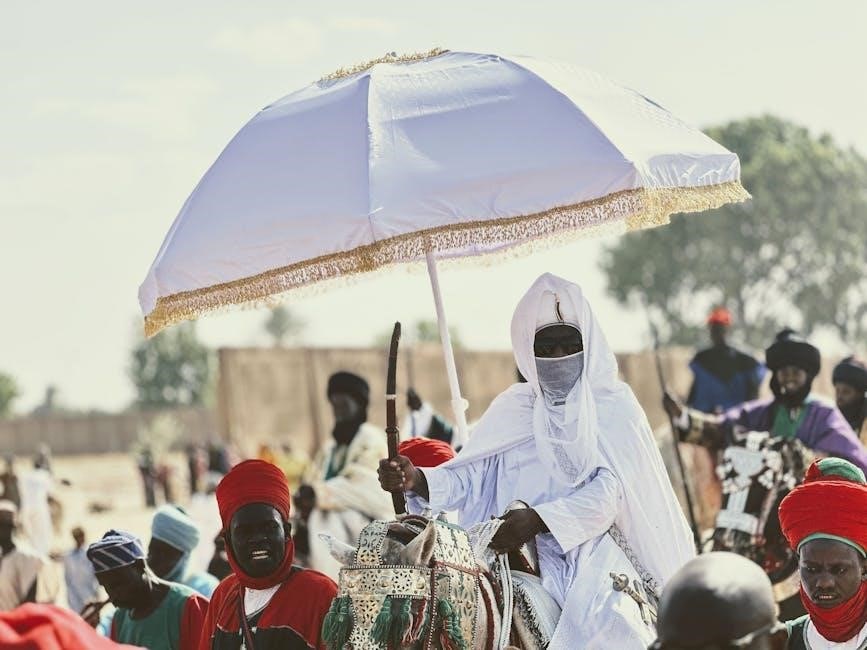
Resources for Further Study
Explore Masonic libraries, PDF guides, and online forums for in-depth insights into the 3rd Degree Ritual. These resources offer detailed explanations and historical context for further study.
Recommended Literature and PDF Guides
For deeper understanding, explore PDF guides like The Master Mason Ritual and Symbolism of Freemasonry. These resources offer detailed insights into the 3rd Degree, its history, and symbolism. Masonic libraries and online forums provide access to these materials, ensuring a comprehensive study experience. They are invaluable for candidates preparing for the 3rd Degree examination or seeking to enrich their Masonic knowledge with authentic sources and historical context.
Online Communities and Forums
Online communities and forums dedicated to Freemasonry offer valuable insights and discussions about the 3rd Degree Masonic Ritual. Platforms like Reddit’s r/Freemasonry and specialized Masonic forums provide spaces for members to share knowledge, ask questions, and explore resources. These communities often include threads on ritual practices, symbolism, and historical context, making them a great supplement to traditional study materials. Engaging with these forums can enhance understanding and foster connections among Masons worldwide, creating a supportive environment for learning and growth.
Legacy and Cultural Impact
The 3rd Degree Masonic Ritual has profoundly shaped Freemasonry’s values and traditions, influencing modern practices and cultural perceptions, ensuring its enduring relevance and historical significance.
Influence on Modern Freemasonry
The 3rd Degree Masonic Ritual remains a cornerstone of modern Freemasonry, shaping its values and practices. It emphasizes morality, brotherhood, and service, guiding members to uphold these principles in their lives. The ritual’s timeless teachings continue to inspire personal growth and community involvement, ensuring its relevance in contemporary society. By maintaining its original essence while adapting to modern values, the 3rd Degree has solidified its influence on Freemasonry’s evolution, fostering a strong sense of purpose and unity among its members worldwide.
Cultural References and Historical Significance
The 3rd Degree Masonic Ritual holds profound cultural and historical significance, reflecting centuries-old traditions and symbolism. It has influenced literature, art, and film, with its themes of resurrection and moral integrity appearing in works like Egyptian Mysteries and The Magic Flute. Historically, the ritual’s emphasis on equality and justice aligned with Enlightenment ideals, shaping modern fraternal organizations. Its legacy endures as a symbol of spiritual and ethical development, connecting past and present in a shared journey of self-discovery and brotherhood.
The 3rd Degree Masonic Ritual is a profound journey of spiritual growth, moral lessons, and brotherhood. It culminates in a Master Mason’s commitment to service and enlightenment.
May it inspire continued exploration and dedication to Freemasonry’s timeless principles.
Final Thoughts on the 3rd Degree Ritual
The 3rd Degree Ritual is a profound journey, culminating in moral enlightenment and brotherhood. It transforms initiates through symbolic tests of knowledge, strength, and courage, emphasizing service, integrity, and spiritual growth. The ritual’s legacy endures, inspiring Master Masons to uphold Freemasonry’s timeless values and contribute to a better world. Its impact resonates deeply, fostering personal and collective growth while honoring the fraternity’s rich traditions.
Encouragement for Further Exploration
Exploring the 3rd Degree Masonic Ritual invites deeper understanding of Freemasonry’s core values and symbolism. Delve into its rich history, moral teachings, and spiritual significance. Engage with Masonic literature, online forums, and community resources to expand your knowledge. Embrace continuous learning and active participation in lodge activities to fully embody the principles of brotherhood, service, and personal growth. This journey offers profound insights and opportunities for meaningful contribution to the fraternity and society at large.


